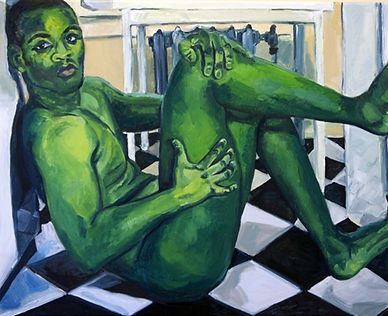
Figure Painting Project
Steps:
1. Make a written list of your own visual ideas for painting the figure
Consider:
-
pose
-
scale of figure to format
-
overall format
-
accoutrements (clothing, hair, hat, jewelry, glasses, background props)
-
lighting
-
color palette
-
paint handling
2. Do a series of thumbnail sketches exploring different compositional ideas for this project.
3. For reference, choose one of the following approaches:
-
Photograph your model from various angles.
- or -
-
Have someone photograph you (or set up your camera on a timer) from various angles.
- or -
-
Use a found photograph(s)
4. THINK ABOUT LIGHTING
5. If possible print out the photo
6. Create an inspo board of references for paint handling, color, composition, etc.
7. Using the additive (thinned paint drawn onto a white canvas) or subtractive (paint removed from a toned canvas), quickly “sketch” out your idea on the prepared canvas or board.
8. Wipe off and make changes to the composition
9. Begin full color painting (with palette knife, brush, paint stick, marker, etc.)
8. Step back often
9. Rework and rework
Consider Expressive Possibilities of Visual Components:
-
Line: thick, thin, straight, curved, jagged, broken, scraped, knifed etc.
-
Marks: Thick, thin, long, short, drips, delicate, heavy
-
Surface: flat, washy, impasto, scratched, knifed
-
Spatial Techniques: overlapping, linear perspective, atmospheric perspective, modeling, scale changes, position, etc.
-
Color: bold, neutral, pale, deep, close range, dramatic
VIDEOS! Short videos about two very different contemporary figurative artists
Jenny Saville "Life Through a Microscope"
Jordan Casteel "Stays in the Moment"




















